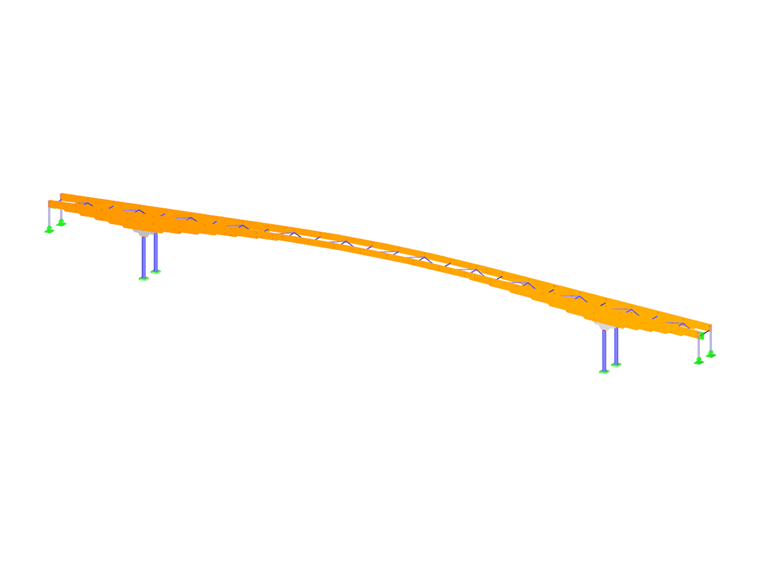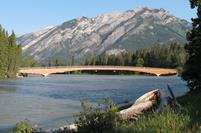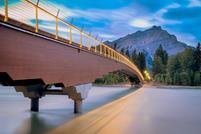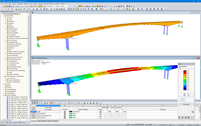The structural and dynamic analysis was performed in RFEM by Dlubal customer StructureCraft Builders Inc., located in Abbotsford, Canada.
Structure
Two 13-foot tapered haunch girders cantilever from either side to support a 112-foot suspended span. The bridge deck cross-section consists of twinned glulam girders. The girders are stepped to follow the flow of forces; they range in depth from 8 ft, 6 inches at the piers to 2 ft, 11 inches at the suspended span. The horizontal truss bracing includes rectangular steel hollow sections arranged between the longitudinal girders.
Removable prestressed timber panels make up the 13-foot-wide deck to provide access to the service pipes hidden below.
A visually minimal stainless cable guardrail system involving 443-foot-long continuous cables required fine-tuned pretension analysis to ensure adequate tension in the summer and avoid over-tension in the winter.
Dynamic Analysis
The long span and slender profile of the bridge made it susceptible to both vertical and lateral excitation from human traffic. Without further consideration, around 40-50 pedestrians crossing would be enough to cause lateral “lock-in” and acceleration resonance.
While tuned mass dampers are commercially available, there was no room to conceal them below the deck. Instead, through much research and testing, an alternative was developed: two cable-suspended masses were visually exposed as unique tuned mass dampers to address footstep and jogging excitation, respectively.
The dampers consist of carriages containing a series of plates (the “mass") suspended with cables (the “spring"). Tuning is simply addressed with the addition or subtraction of plates. However, it was crucial that the dampers were tuned to the actual frequencies, which required additional field testing.
Testing was carried out by installing 6 accelerometers at key points in the span. Modal analysis software determined the actual frequencies, mode shapes, and damping ratios.
These results were compared with the fundamental frequencies and mode shapes predicted from the RFEM models with accurate correlation. The FE models were then updated to reflect the actual support stiffness conditions. Lateral accelerations due to lock-in, which were a concern during the early design stages, were not observed to be an issue in service. Even at the inauguration (>100 people crossing the bridge), there were no reports of adverse comments regarding bridge acceleration.
The town of Banff now includes a new pedestrian bridge crossing which is not only functional, but also enhances the stunning mountain and river setting.
| Investor | Town of Banff, Canada banff.ca |
| Design-Build, General Contractor | StructureCraft Builders Inc., Canada www.structurecraft.com |






